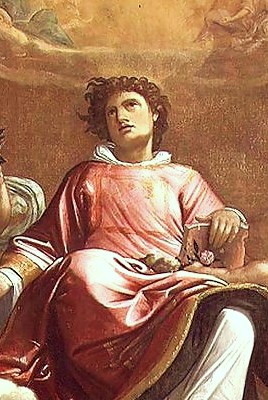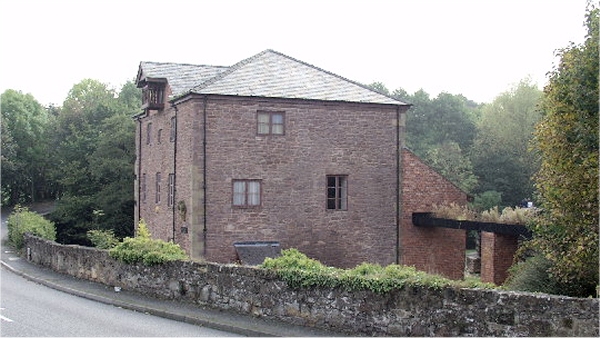|
Lewis Pryce
LewisHugh Oswald Pryce (1 August 1873 – 30 September 1930) was a Welsh Anglican priest in the first third of the 20th century who rose to become Archdeacon of Wrexham. The son of Shadrach Pryce, Dean of St Asaph from 1899 to 1910, he was educated at Clifton College and Pembroke College, Cambridge. He was ordained Deacon in 1896; and Priest in 1897. After curacies in Lampeter and Brecon he held incumbencies in Wrexham and Bistre. He was Warden of Ruthin from 1909 to 1916; Vicar of Colwyn Bay from 1916 to 1923; and Rural Dean of Wrexham from 1923 until his appointment as Archdeacon. Crockford's Clerical Directory 1929-30Oxford, OUP Oxford University Press (OUP) is the university press of the University of Oxford. It is the largest university press in the world, and its printing history dates back to the 1480s. Having been officially granted the legal right to print books ..., 1929 References 1873 births People educated at Clifton College Alumni of ... [...More Info...] [...Related Items...] OR: [Wikipedia] [Google] [Baidu] |
The Times
''The Times'' is a British daily national newspaper based in London. It began in 1785 under the title ''The Daily Universal Register'', adopting its current name on 1 January 1788. ''The Times'' and its sister paper '' The Sunday Times'' (founded in 1821) are published by Times Newspapers, since 1981 a subsidiary of News UK, in turn wholly owned by News Corp. ''The Times'' and ''The Sunday Times'', which do not share editorial staff, were founded independently and have only had common ownership since 1966. In general, the political position of ''The Times'' is considered to be centre-right. ''The Times'' is the first newspaper to have borne that name, lending it to numerous other papers around the world, such as '' The Times of India'', ''The New York Times'', and more recently, digital-first publications such as TheTimesBlog.com (Since 2017). In countries where these other titles are popular, the newspaper is often referred to as , or as , although the newspaper is of na ... [...More Info...] [...Related Items...] OR: [Wikipedia] [Google] [Baidu] |
Deacon
A deacon is a member of the diaconate, an office in Christian churches that is generally associated with service of some kind, but which varies among theological and denominational traditions. Major Christian churches, such as the Catholic Church, the Oriental Orthodox Churches, the Eastern Orthodox Church, the Scandinavian Lutheran Churches, the Methodist Churches, the Anglican Communion, and the Free Church of England, view the diaconate as an order of ministry. Origin and development The word ''deacon'' is derived from the Greek word (), which is a standard ancient Greek word meaning "servant", "waiting-man", "minister", or "messenger". It is generally assumed that the office of deacon originated in the selection of seven men by the apostles, among them Stephen, to assist with the charitable work of the early church as recorded in Acts of the Apostles chapter 6. The title ''deaconess'' ( grc, διακόνισσα, diakónissa, label=none) is not found in the Bible ... [...More Info...] [...Related Items...] OR: [Wikipedia] [Google] [Baidu] |
Archdeacon
An archdeacon is a senior clergy position in the Church of the East, Chaldean Catholic Church, Syriac Orthodox Church, Anglican Communion, St Thomas Christians, Eastern Orthodox churches and some other Christian denominations, above that of most clergy and below a bishop. In the High Middle Ages it was the most senior diocesan position below a bishop in the Catholic Church. An archdeacon is often responsible for administration within an archdeaconry, which is the principal subdivision of the diocese. The ''Oxford Dictionary of the Christian Church'' has defined an archdeacon as "A cleric having a defined administrative authority delegated to him by the bishop in the whole or part of the diocese.". The office has often been described metaphorically as that of ''oculus episcopi'', the "bishop's eye". Roman Catholic Church In the Latin Catholic Church, the post of archdeacon, originally an ordained deacon (rather than a priest), was once one of great importance as a senior offi ... [...More Info...] [...Related Items...] OR: [Wikipedia] [Google] [Baidu] |
Rural Dean
In the Roman Catholic Church and the Anglican Communion as well as some Lutheran denominations, a rural dean is a member of clergy who presides over a "rural deanery" (often referred to as a deanery); "ruridecanal" is the corresponding adjective. In some Church of England dioceses rural deans have been formally renamed as area deans. Origins The title "dean" (Latin ''decanus'') may derive from the custom of dividing a hundred into ten tithings, not least as rural deaneries originally corresponded with wapentakes, hundreds, commotes or cantrefi in Wales. Many rural deaneries retain these ancient names.Cross, F. L., ed. (1957) ''The Oxford Dictionary of the Christian Church''. London: Oxford University Press; p. 1188. The first mention of rural deans comes from a law made by Edward the Confessor, which refers to the rural dean being appointed by the bishop "to have the inspection of clergy and people from within the district to which he was incumbent... to which end ehad po ... [...More Info...] [...Related Items...] OR: [Wikipedia] [Google] [Baidu] |
Colwyn Bay
Colwyn Bay ( cy, Bae Colwyn) is a town, community and seaside resort in Conwy County Borough on the north coast of Wales overlooking the Irish Sea. It lies within the historic county of Denbighshire. Eight neighbouring communities are incorporated within its postal district. Established as its own separate parish in 1844 with just a small grouping of homes and farms where the community of Old Colwyn stands today, Colwyn Bay has expanded to become the second-largest community and business centre in the north of Wales as well as the 14th largest in the whole of Wales with the urban statistical area, including Old Colwyn, Rhos-on-Sea, and Mochdre and Penrhyn Bay, having a population of 34,284 at the 2011 census. History The western side of Colwyn Bay, Rhos-on-Sea, includes a number of historic sites associated with St Trillo and Ednyfed Fychan, the 13th century general and councillor to Llywelyn the Great. The name 'Colwyn' may be named after 'Collwyn ap Tangno' who wa ... [...More Info...] [...Related Items...] OR: [Wikipedia] [Google] [Baidu] |
Ruthin
Ruthin ( ; cy, Rhuthun) is a market town and community in Denbighshire, Wales, in the south of the Vale of Clwyd. It is Denbighshire's county town. The town, castle and St Peter's Square lie on a hill, skirted by villages such as Pwllglas and Rhewl. The name comes from the Welsh ''rhudd'' (red) and ''din'' (fort), after the colour of sandstone bedrock, from which the castle was built in 1277–1284. The Old Mill, Ruthin, is nearby. Maen Huail, a registered ancient monument attributed to the brother of Gildas and King Arthur, stands in St Peter's Square. Demographics The population at the 2001 census was 5,218, of whom 47 per cent were male and 53 per cent female. The average age was 43.0 years and 98.2 per cent were white. According to the 2011 census, the population had risen to 5,461. 68 per cent of which were born in Wales and 25 per cent in England. Welsh speakers account for 42 per cent of the town's population. The community includes the village of Llanfwrog. H ... [...More Info...] [...Related Items...] OR: [Wikipedia] [Google] [Baidu] |
Warden (college)
Warden is the title given to or adopted by the heads of some university colleges and other institutions. It dates back at least to the 13th century at Merton College, Oxford; the original Latin version is ''custos''. England University of Bristol: * Wills Hall University of Cambridge: * Robinson College University of London: * Goldsmiths University of Oxford: Nuffield College, Oxford, UK. * All Souls College * * [...More Info...] [...Related Items...] OR: [Wikipedia] [Google] [Baidu] |
Bistre
Bistre (or bister) can refer to two things: a very dark shade of grayish brown (the version shown on the immediate right); a shade of brown made from soot, or the name for a color resembling the brownish pigment. Bistre's appearance is generally of a dark grayish brown, with a yellowish cast. Beechwood was burned to produce the soot, which was boiled and diluted with water. Many Old Masters used bistre as the ink for their drawings. The first recorded use of ''bistre'' as a color name in English was in 1727; another name for the color ''bistre'' is soot brown. __NOTOC__ Variations of bistre Bistre brown At right is displayed the color bistre brown, a medium brownish tone of the color ''bistre'', also known as ''soot brown''. This is the tone of ''bistre'' that most closely matches the color sample in the 1930 book ''A Dictionary of Color'' by Maerz and Paul. This tone of bistre is the color of the ink that was used by the Old Masters for their drawings. The normaliz ... [...More Info...] [...Related Items...] OR: [Wikipedia] [Google] [Baidu] |
Wrexham
Wrexham ( ; cy, Wrecsam; ) is a city and the administrative centre of Wrexham County Borough in Wales. It is located between the Welsh mountains and the lower Dee Valley, near the border with Cheshire in England. Historically in the county of Denbighshire, and later the county of Clwyd in 1974, it has been the principal settlement of Wrexham County Borough since 1996. Wrexham has historically been one of the primary settlements of Wales. At the 2011 Census, it had an urban population of 61,603 as part of the wider Wrexham built-up area which made it Wales's fourth largest urban conurbation and the largest in north Wales. The city comprises the local government communities of Acton, Caia Park, Offa and Rhosddu. Wrexham's built-up area extends further into villages like Bradley, Brymbo, Brynteg, Gwersyllt, New Broughton, Pentre Broughton and Rhostyllen. Wrexham was likely founded prior to the 11th century and developed in the Middle Ages as a regional centre fo ... [...More Info...] [...Related Items...] OR: [Wikipedia] [Google] [Baidu] |
Vicar
A vicar (; Latin: '' vicarius'') is a representative, deputy or substitute; anyone acting "in the person of" or agent for a superior (compare "vicarious" in the sense of "at second hand"). Linguistically, ''vicar'' is cognate with the English prefix "vice", similarly meaning "deputy". The title appears in a number of Christian ecclesiastical contexts, but also as an administrative title, or title modifier, in the Roman Empire. In addition, in the Holy Roman Empire a local representative of the emperor, perhaps an archduke, might be styled " vicar". Roman Catholic Church The Pope uses the title ''Vicarius Christi'', meaning the ''vicar of Christ''. In Catholic canon law, ''a vicar is the representative of any ecclesiastic'' entity. The Romans had used the term to describe officials subordinate to the praetorian prefects. In the early Christian churches, bishops likewise had their vicars, such as the archdeacons and archpriests, and also the rural priest, the curate who h ... [...More Info...] [...Related Items...] OR: [Wikipedia] [Google] [Baidu] |
Brecon
Brecon (; cy, Aberhonddu; ), archaically known as Brecknock, is a market town in Powys, mid Wales. In 1841, it had a population of 5,701. The population in 2001 was 7,901, increasing to 8,250 at the 2011 census. Historically it was the county town of Brecknockshire (Breconshire); although its role as such was eclipsed with the formation of the County of Powys, it remains an important local centre. Brecon is the third-largest town in Powys, after Newtown and Ystradgynlais. It lies north of the Brecon Beacons mountain range, but is just within the Brecon Beacons National Park. History Early history The Welsh name, Aberhonddu, means "mouth of the Honddu". It is derived from the River Honddu, which meets the River Usk near the town centre, a short distance away from the River Tarell which enters the Usk a few hundred metres upstream. After the Dark Ages the original Welsh name of the kingdom in whose territory Brecon stands was (in modern orthography) " Brycheiniog", whic ... [...More Info...] [...Related Items...] OR: [Wikipedia] [Google] [Baidu] |





.jpg)



